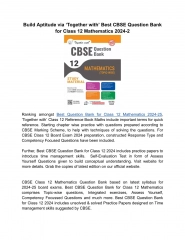
Elements of English Grammar: Verbs and Morphology Explained
Explore the classification of verbs into lexical and auxiliary categories, along with the five main forms of verbs like base, third person singular, past, present participle, and past participle. Delve into the morphology of lexical verbs, including regular and irregular forms. Understand the formation of -ing and -s forms, the doubling of consonants, and how past tense and past participle are structured in English. Enhance your understanding of English grammar with detailed explanations and examples.
Download Presentation

Please find below an Image/Link to download the presentation.
The content on the website is provided AS IS for your information and personal use only. It may not be sold, licensed, or shared on other websites without obtaining consent from the author. If you encounter any issues during the download, it is possible that the publisher has removed the file from their server.
You are allowed to download the files provided on this website for personal or commercial use, subject to the condition that they are used lawfully. All files are the property of their respective owners.
The content on the website is provided AS IS for your information and personal use only. It may not be sold, licensed, or shared on other websites without obtaining consent from the author.
E N D
Presentation Transcript
Ministry of Higher Education and Scientific Researches Mustaqbal University College Department of English . Class first . Chapter Two Elements of Grammar BY dr.MUSTAFA MUSLIM
Verbs and the verb phrase There are various ways to classify verbs in English. According to the function, verbs can be classified as: 1- Lexical verbs walk , eat, play 2- Auxiliary verbs primary have , be , do modal will , can , may
Verbal forms The main five forms of any verb will be as: Form Symbol Example Base V Call , drink , put -s ( third person singular) V-s Calls , drinks , puts Past V-ed1 Called , drank , put -ing ( present participle ) V-ing Calling , drinking , putting -ed ( past participle ) V-ed2 Called , drank , put
The morphology of lexical verbs Lexical verbs can be considered under two heads: 1- regular the past and past participle end with ( -ed ) Ex: call called , called 2- irregular the past and past participle can be predictable from the base. Ex: speak spoke , spoken
The ing and s forms 1- the ing form is a straightforward addition to the base: Play playing Sleep sleeping Push pushing 2- The s form is also a straightforward addition to the base: Play Plays Sleep Sleeps
3- The s form will be ( es ) when the verbs end with ( s , ss , x , ch , sh , ge , o ) : Pass passes Buzz buzzes Catch catches Push pushes Budge budges Do does Go goes
The past and the ed participle The past ( V-ed 1) and the ed participle ( V-ed 2 ) of regular verbs spelled ed unless the base ends in e Play played Pass passed Pack packed
Doubling of consonants 1- Final base consonants ( except x ) are doubled before inflections beginning with a vowel letter ( -ed , -ing ) when the preceding vowel is stressed and spelled with a single letter: Bar barring , barred Permit permitting , permitted 2- There is no doubling when the vowel is unstressed or written with two letters: Enter entering , entered Dread dreading , dreaded
Treatment of -y 1- In bases ending in a consonant + y , the y letter will be changed to I with the addition of ( -s , -ed ) and no change will occur with the addition of ( -ing ) Carry carried carries carrying 2- In bases ending in ( -ie ) is replaced by y before the ing inflection Die dying , lie lying 3- The past of the verbs ( pay , lay ) is done by replacing y to -i Pay paid , lay laid
Deletion of -e 1- Final e is regularly dropped before the ing and ed inflections Shave shaving shaved 2- Verbs end with ee , -ye , -oe , and ge are exceptions to the above rule in that they do not drop the e before ing ; but the drop it before -ed Agree agreeing agreed Dye dyeing dyed Hoe hoeing hoed Singe singeing singed






















